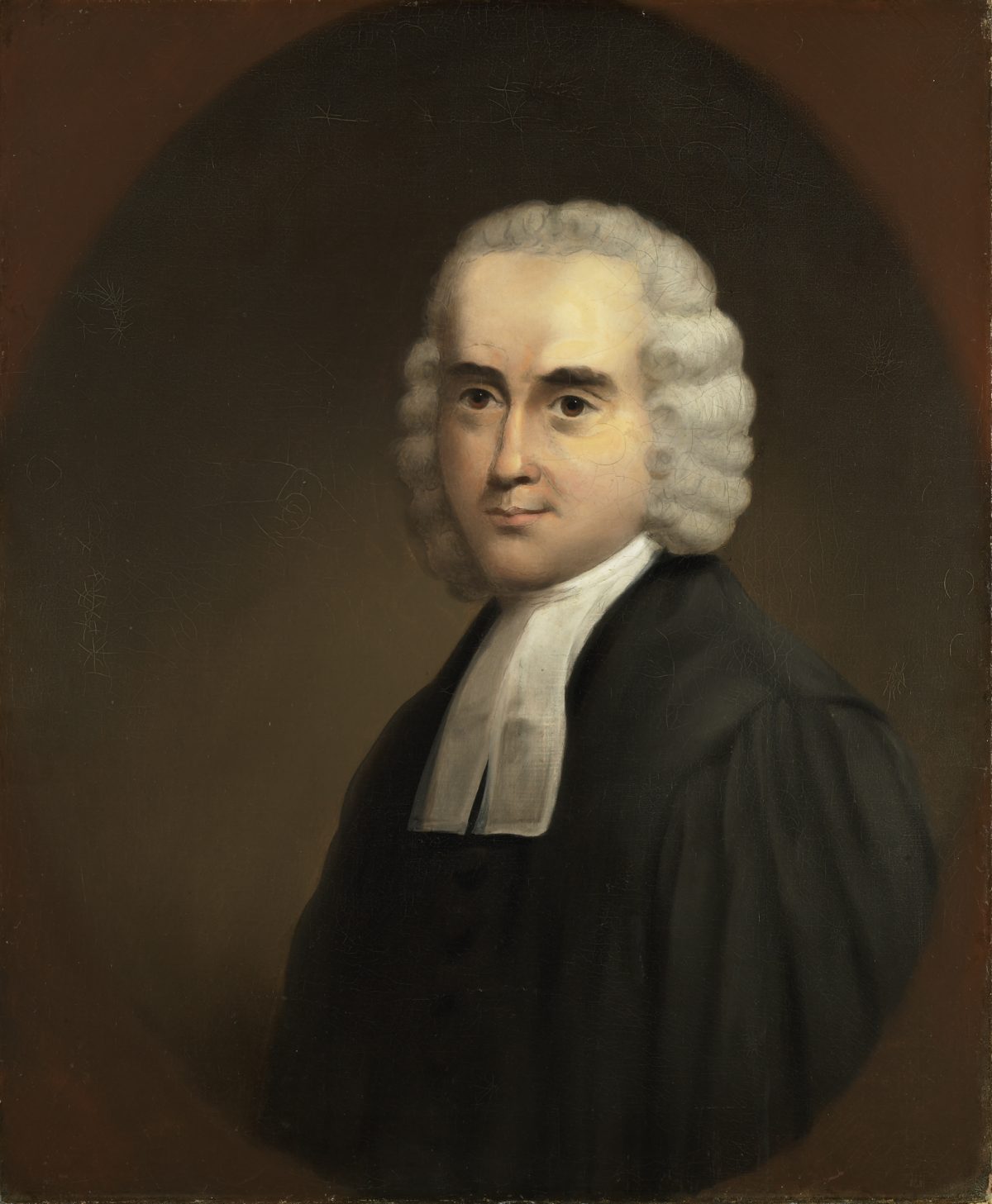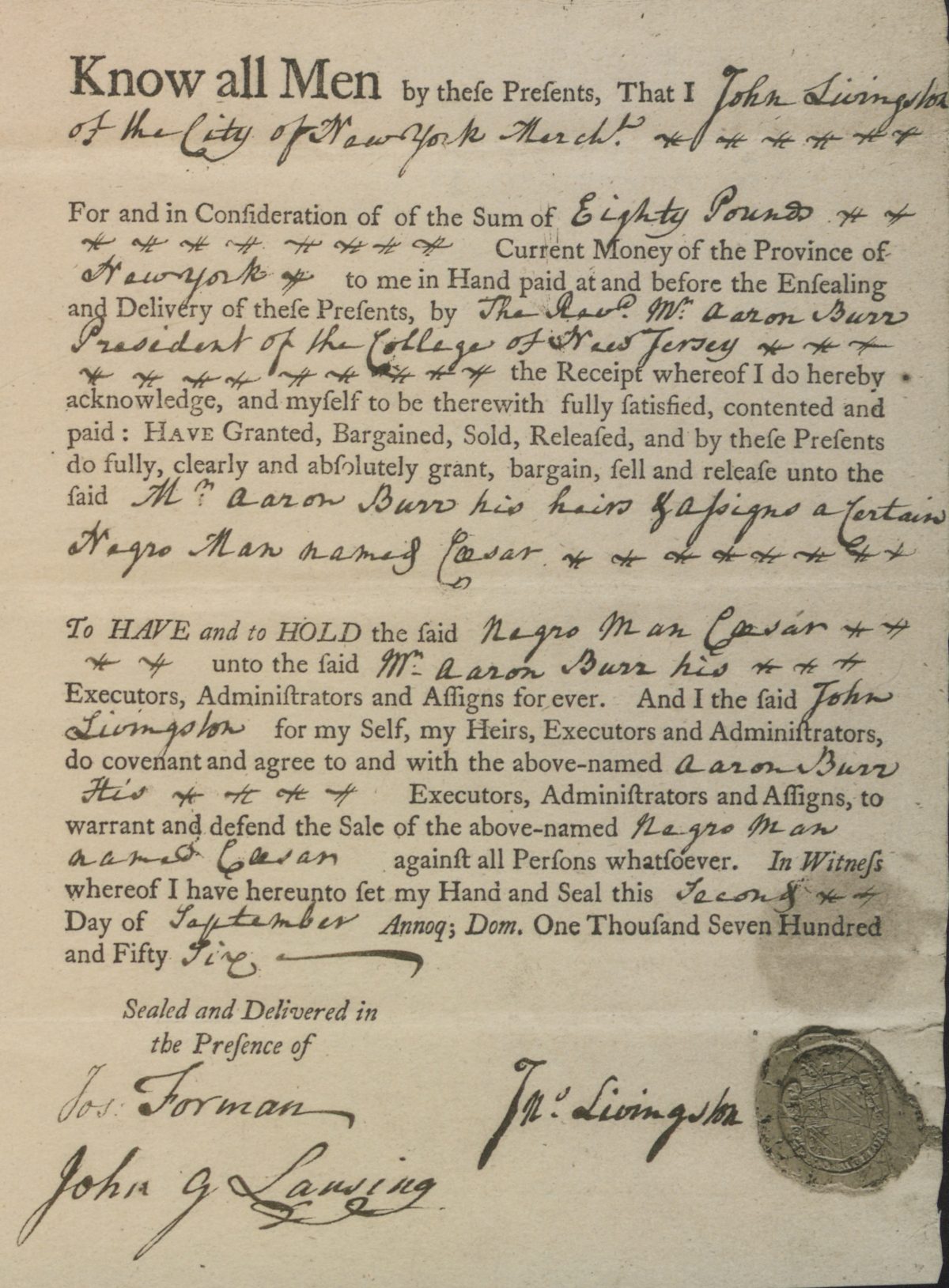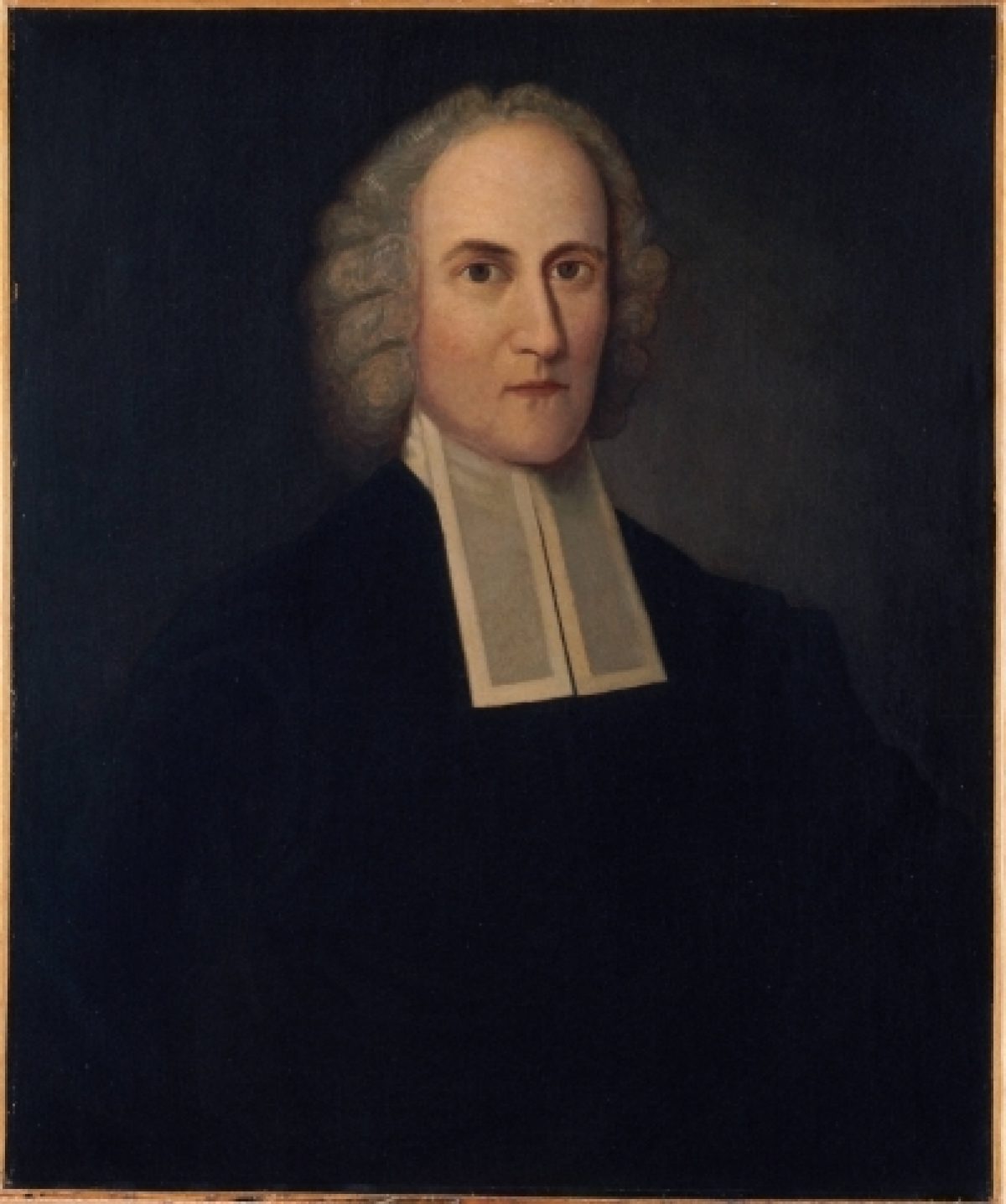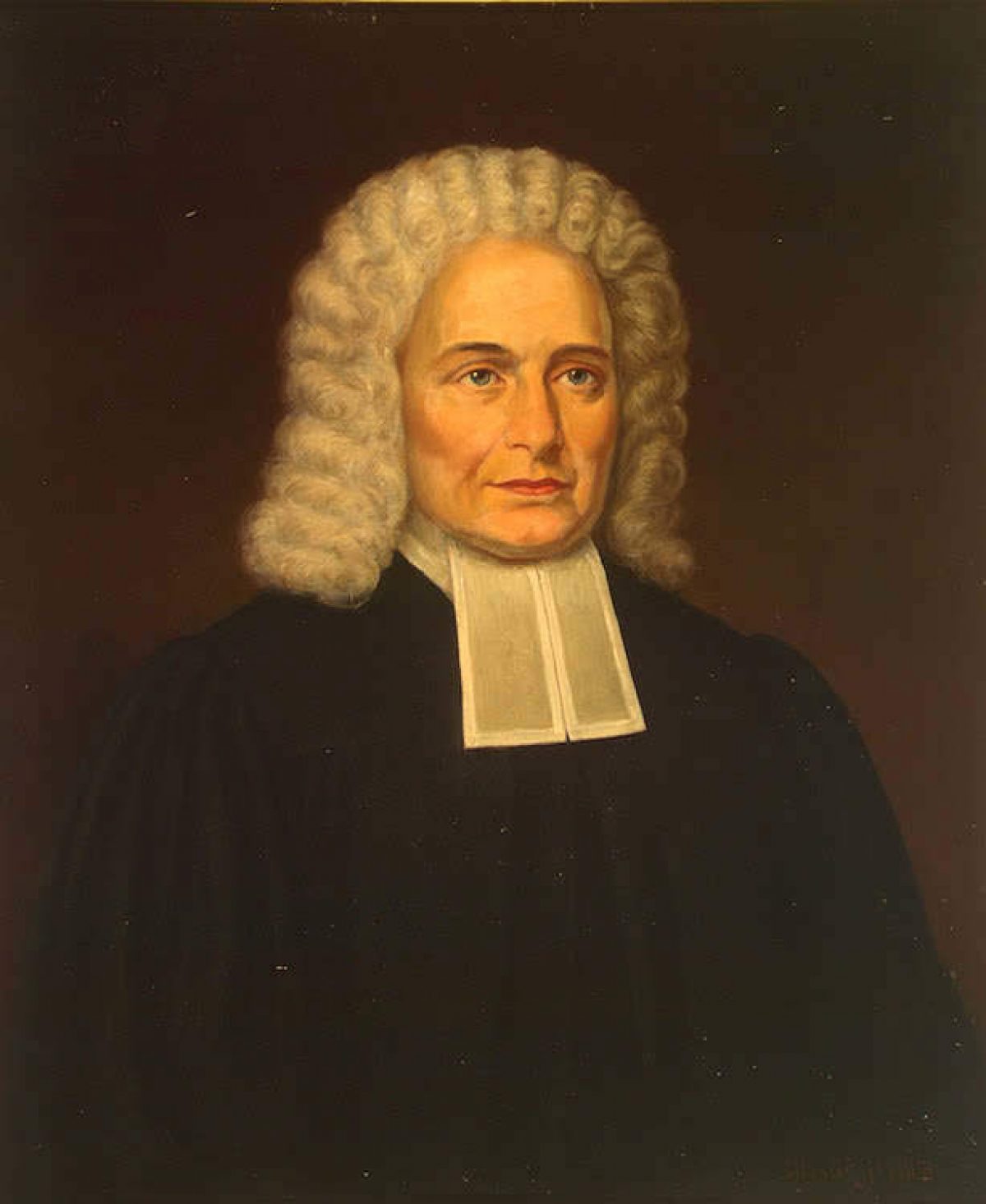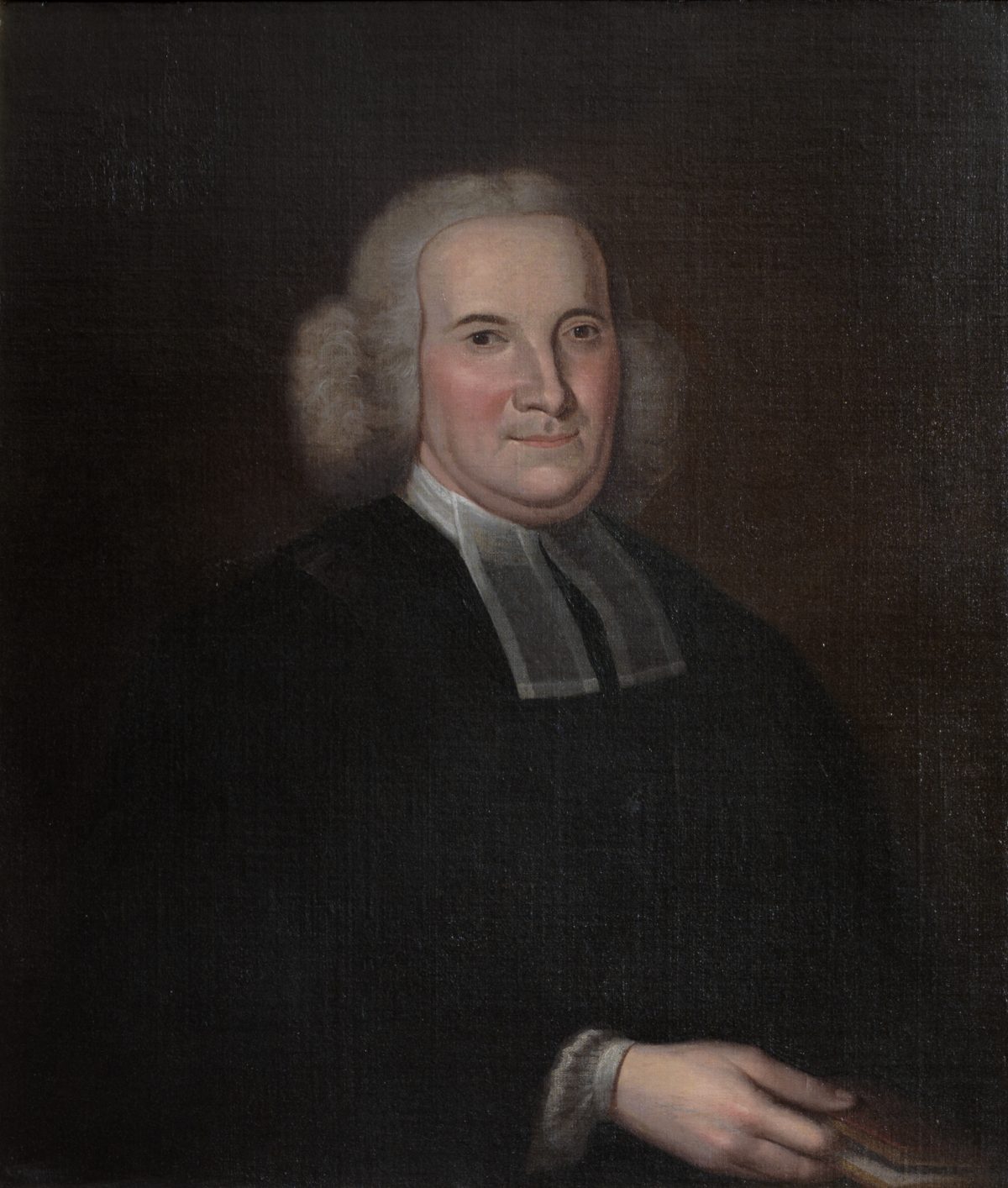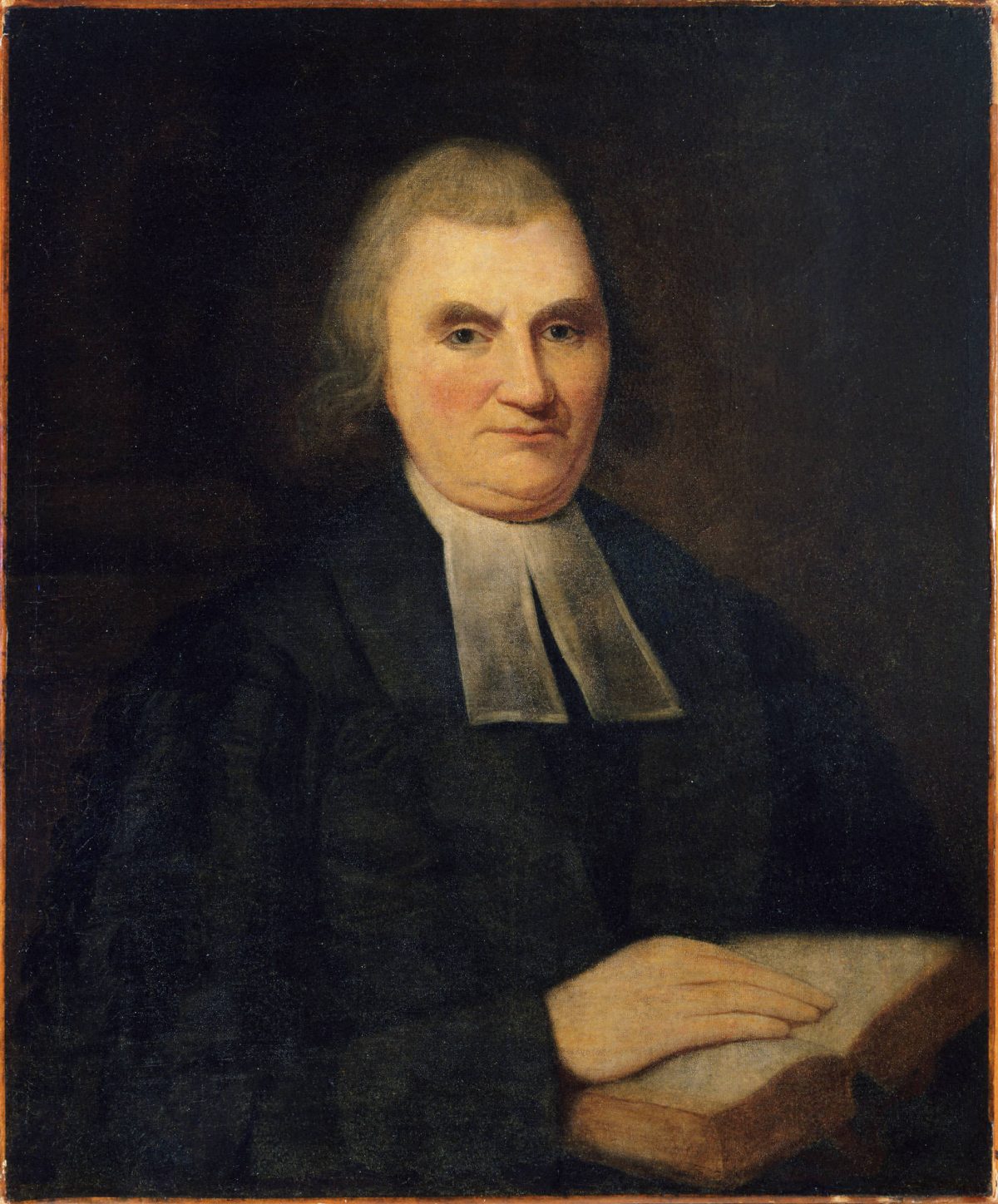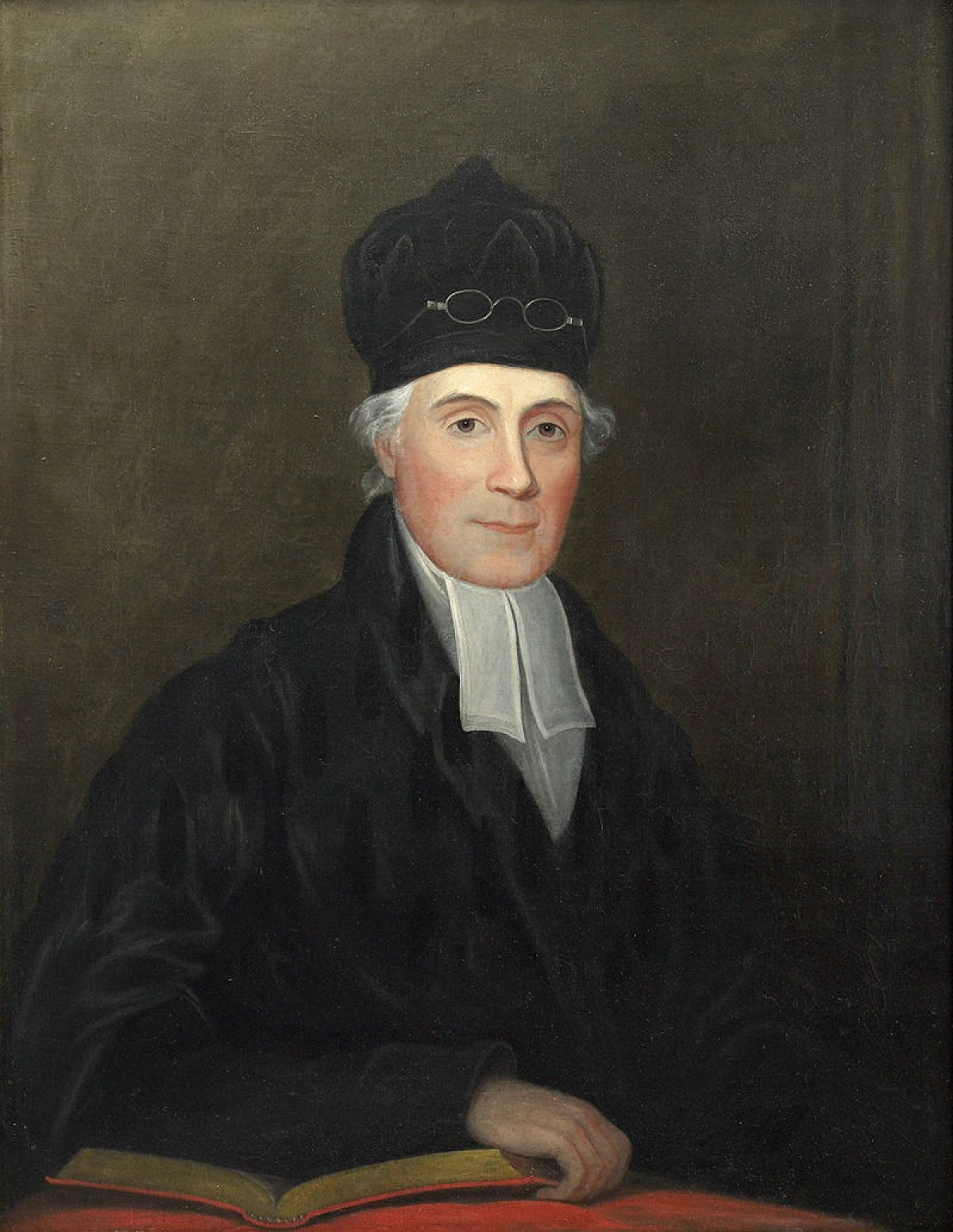Introduction
In 1746, establishing the College of New Jersey was a radical proposition. Its founders were religious dissenters—evangelical ministers challenging the conservative wing of the Presbyterian church—and their plan for a school where young men of all religious affiliations could train for the ministry and other “learned professions” struck some contemporaries as, perhaps, a bit too democratic.[1] But Princeton’s founders valued broad-mindedness, and their successors would continue that tradition. From the pulpit and in print, the college’s leaders throughout the colonial and early national periods championed religious and civil liberties, argued for the spiritual equality of all people, defended the intellectual abilities of Africans, African Americans, and Native Americans, and questioned the very concept of race as a biological category. Princeton’s first nine presidents were at the forefront of theology, scholarship, and political thought in British North America and (eventually) the young United States.
They also, to a man, owned human beings as property.
Though Princeton’s early presidents gained reputations as religious luminaries, Enlightenment scholars, and Revolutionary leaders in the public sphere, they arranged their private households around the institution of slavery. Each of the nine men who held the office of president between 1747 and 1854 owned slaves at some point in their adult lives—with at least five of them bringing enslaved people with them to the President’s House on campus. Racist assumptions underlay their personal practices even as they recognized and spoke out against slavery as a moral evil in their public lives. Ultimately, they failed to align their actions with the high-minded ideals to which they claimed to ascribe.
With leaders at the highest levels of public life, drawing students from all regions of the country, Princeton was a national institution even in its early years.[2] And the story of its presidents is a national one as well. In their contradictory principles and practices, Princeton’s first nine presidents embodied the tensions between liberty and slavery that characterized American life from the colonial period to the Civil War.
Jonathan Dickinson (1747)
Jonathan Dickinson spearheaded the establishment of the College of New Jersey in 1746, amidst the religious upheaval of the First Great Awakening. Dickinson, a Presbyterian minister, was a prominent figure among the “New Lights,” whose emphasis on revivalism and a personal, emotional experience of Christianity alarmed the more conservative “Old Lights” in the Presbyterian Church. Dickinson intended the College of New Jersey to be an answer to Harvard and Yale, whose presidents and faculty were hostile to “New Lights”; he and the other founding trustees declared that, at the College of New Jersey, “no person [would] be debarred … on account of any speculative principles of religion.”[3] Appointed the college’s first president in 1747, Dickinson encouraged his students to welcome both classmates and community members of different backgrounds, and to treat the poor with “charitable and compassionate relief.”[4]
The College of New Jersey’s first classes were held at Dickinson’s home in Elizabethtown, where students would have come into contact with an enslaved woman named Genny, whom Dickinson had purchased in 1733.[5] Dickinson held that all people—regardless of race or legal status—were equal in the eyes of God: “the soul of your meanest slave,” he wrote, “is of more value than this whole world.”[6] But the minister’s belief in the spiritual equality of enslaved people did not translate into support for their emancipation. Dickinson justified slavery by framing masters as teachers. Just as he mentored his students at the College of New Jersey, Dickinson believed that slave-owners were “under a like obligation to take care of the souls of your servants, as of your children; and to impress upon their minds the vast concerns of eternity.”[7]
Dickinson’s beliefs and rationalizations left a mixed legacy: though he acknowledged enslaved people as his spiritual equals, by framing masters as teachers and comparing slaves to children he provided a foundation for the paternalism that slave-owners would use to justify themselves for more than a century after.
Aaron Burr Sr. (1748-57)
Like Dickinson, Aaron Burr Sr. was one of the College of New Jersey’s original founding trustees, and remains the youngest person to have served as a Princeton president (he was thirty-two years old when appointed). Burr too was a “New Light” minister, but his influence extended beyond the religious sphere into the political.
Burr served as president during the early years of the French and Indian War (1754-63), the North American theater of the Seven Years’ War, in which British colonies fought the French and their Native American allies. In 1756, he delivered a sermon before the Presbyterian Synod of New York, framing opposition to the French as both a Christian and patriotic duty. A French victory, he wrote, would be followed by nothing less than “the Horrors of Popery, Slavery and Death,” jeopardizing their exercise of “all the invaluable Priviledges of unadulterated Christianity; British Liberty and Property.”[8]
Burr’s talk of slavery and liberty was, however, strictly rhetorical when it came to the actual practice of holding African and African American men and women in bondage. Burr and his family moved into the President’s House on the college’s new Princeton campus just months after he delivered his address to the Synod of New York—and he brought at least one and possibly two enslaved people with him to his new home. Burr had purchased a “Negro Man” named Caesar in 1756 for eighty pounds, and after the president’s death in 1757, his mother-in-law would express interest in buying another one of Burr’s slaves, a man named Harry.[9]
Jonathan Edwards (1758)
Jonathan Edwards was arguably colonial America’s most prominent religious and intellectual figure.[10] Though he served as president for less than two months before his sudden death in 1758, Edwards had a distinguished career as a Congregationalist minister and theologian before his time at Princeton—earning an international reputation as the foremost defender of “New Light” theology during the Great Awakening. His sermon “Sinners in the Hands of an Angry God” was one of the period’s most famous revivalist sermons, and continues to be taught today as a classic of early American literature.[11]
Edwards shared Jonathan Dickinson’s belief in the spiritual but not earthly equality of all people. He ministered to Native Americans as well as Anglo Americans throughout his adult life, engaging in missionary work among Mahican and Mohawk tribes in Stockbridge, New Jersey.[12] Edwards also addressed slavery and the Atlantic slave trade; in his sermons and writings, he used scripture to condemn the cruelty of the slave trade but not the institution of slavery itself. In 1741, Edwards was involved in a conflict within a Northampton congregation which had censured their minister for owning a slave. Edwards defended the minister, arguing that the man’s congregants were hypocrites for criticizing him when even they indirectly benefited from New England slavery.[13]
Edwards, a slaveholder himself, could not have denounced the Northampton minister without making himself guilty as well. Over the course of his life, Edwards purchased and owned multiple enslaved people, including two—a married couple named Joseph and Sue—who may have accompanied him to Princeton in 1758.[14] Some of Edwards's students, as well as his son Jonathan Edwards Jr., would become leading antislavery activists of the 18th century.
Samuel Davies (1759-61)
Before his appointment as president, Samuel Davies was a pioneering Presbyterian minister on Virginia’s western frontier, whose radicalism earned him the epithet “apostle of dissent.”[15] Davies was one of the earliest, and most successful, missionaries to enslaved people in the British colonies: during his career, he and his acolytes converted hundreds (perhaps thousands) of enslaved Africans and African Americans to Christianity.[16] Davies’s success as a minister was due in part to his skill as an orator, and his preaching style allegedly influenced Patrick Henry—who attended Davies’s church as a young man and became one of the great orators of the Revolutionary period.[17]
Like Dickinson and Edwards, Davies stressed the spiritual equality of free and enslaved people, writing that “a black skin, African birth or extract, or state of slavery, does not disqualify a man from the blessings of the Gospel.”[18] Davies went further than his predecessors, however, in his defense of enslaved people’s intelligence and abilities. He rejected the idea that race had any bearing on a person’s intelligence; if enslaved people appeared “ignorant and stupid,” he argued, it was “not for want of capacity, but for want of instruction.”[19] Believing that one could only become a true Christian by studying scripture, Davies promoted literacy and distributed hundreds of bibles, hymnals, and prayer books to his enslaved congregants.[20]
Davies himself owned at least two slaves while in Virginia. In a sermon delivered during the French and Indian War, Davies urged the enslaved members of his congregation not to aid the French, stating that they ought to trust him because “you know I have shewn a tender concern for your welfare, ever since I have been in the colony: and you may ask my own negroes whether I treat them kindly or no.”[21] In his ministry to enslaved people and interactions with white slave-owners, Davies was careful to stress that conversion to Christianity did not confer a right to emancipation. For Davies, the “awful and important trust” masters had to save their slaves’ souls far outweighed any responsibility to emancipate them.[22] He intended his efforts “to make this land of slavery, a land of spiritual liberty”—but not literal freedom.[23]
Samuel Finley (1761-66)
Davies’s successor Samuel Finley also gained a reputation as a firebrand. Born in Ireland to Scots-Irish parents, as a young man Finley emigrated to British North America, where he trained for the ministry and was influenced by “New Light” thinking.[24] A traveling evangelist and revivalist during the Great Awakening, Finley was on one occasion arrested in Connecticut and deported from the colony under an anti-itinerancy law.[25]
Similar to Edwards and Davies, Finley’s sermons on the French and Indian War provided a model for the rhetoric and arguments of the Revolutionary era. “Fired with a patriot Zeal,” Finley felt compelled to expand his purview from strictly religious matters to current political events.[26] Though “Duty and Inclination both conspire, to make the Publication of Gospel Blessings my ordinary Exercise,” he declared in a 1757 sermon, “whoever imagines, that my Office, as a Minister of Christ, confines me to this alone, understands it no better than they do the divine Nature, who fancy that God has no other Attributes but Kindness and Love.”[27] Finley saw a French victory as an “amazing Danger” which “threatens our civil and religious Rights and Liberties.”[28]
Finley’s commitment to civil liberties did not extend to his slaves. While president of the College of New Jersey, Finley owned at least seven enslaved people—one of whom, a girl named Peg, was bequeathed to his daughter upon his death, and six of whom were auctioned off at the President’s House itself. In a newspaper advertisement, Finley’s executors described the property that would be sold at the auction: “Two Negro women, a negro man, and three Negro children” alongside furniture, livestock, and the president’s personal library.[29] This slave sale, which took place on campus in August 1766, is one of the most glaring examples of Princeton’s close connection to the institution of slavery.
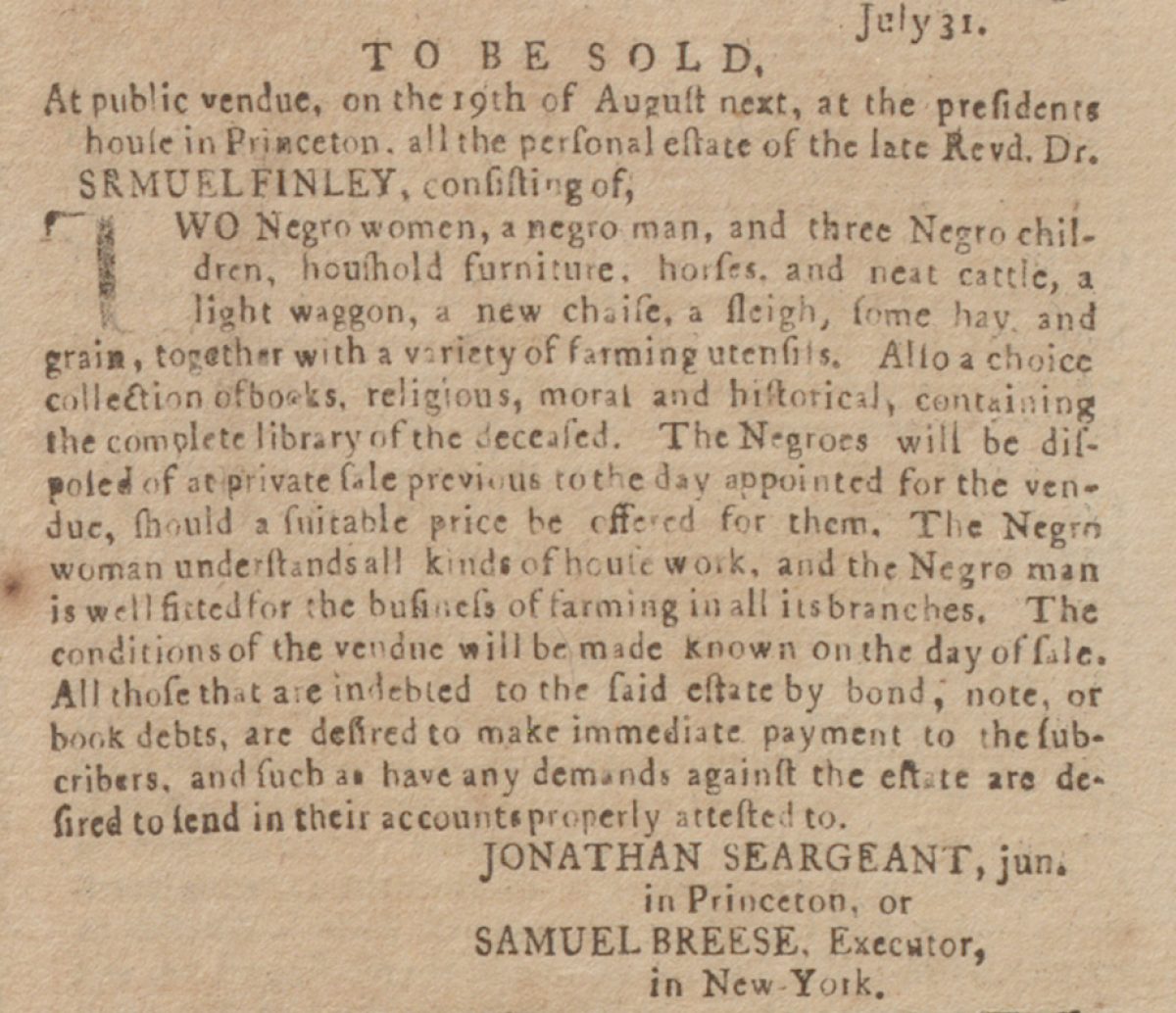
An advertisement announcing the estate sale of President Samuel Finley, held at the President's House on campus.
View Primary Sources
John Witherspoon (1768-94)
John Witherspoon was not only one of Princeton’s early presidents: he was one of the nation’s founding fathers. A member of the Continental Congress and the only active clergyman or college president to sign the Declaration of Independence, Witherspoon was a prominent figure during the American Revolution.[30] He led the college through the war, the campus’s occupation by British forces in 1777, and the four months in 1783 when the Congress of the Convention met in Nassau Hall. Witherspoon’s standing as a Princeton president and his national political reputation gave him a platform from which to speak about slavery, which he used to oppose the abolition of slavery in the early republic.
Witherspoon was born in Scotland and studied divinity at the University of Edinburgh. As a minister in Scotland, he defied tradition and baptized an enslaved man named James Montgomery in 1756; though Witherspoon himself did not believe conversion to Christianity conveyed personal liberty, Montgomery later used his baptism to argue for his freedom.[31] Witherspoon continued to encourage the religious education of Africans and African Americans (both free and enslaved) after his emigration to New Jersey and appointment as president of the College of New Jersey in 1768. While president, Witherspoon personally tutored two free African men to prepare them to serve as Christian missionaries abroad and another free African American man. At the same time, Witherspoon owned two slaves at his country estate outside of Princeton.[32]
Witherspoon publicly argued against the emancipation of slaves in his lectures to Princeton students as well as in formal political settings. In a lecture titled “Politics,” the moral philosopher acknowledged that slavery might be unjust, but declared that this did not obligate masters to “make them free to their own ruin.” In 1790, when Witherspoon chaired a committee to advise state leaders on the question of emancipation, he privileged economic and social stability over morality and voted against the abolition of slavery in New Jersey.
Samuel Stanhope Smith (1795-1812)
A student of John Witherspoon, Samuel Stanhope Smith was the first alumnus of the college to occupy the Princeton presidency. A distinguished scholar and member of the American Philosophical Society, Smith emphasized mathematics, the natural sciences, and modern languages during his tenure—a shift toward the secular that ultimately led to his forced resignation in 1812.[34] In his writings, Smith challenged Enlightenment-era “scientific racism” and argued that race was not in fact a biological category, but the product of climate and environmental differences.[35]
In 1787, Smith delivered his “Essay on the Causes and Variety of Complexion and Figure in the Human Species” to the American Philosophical Society. Smith’s paper was a response to Thomas Jefferson’s Notes on the State of Virginia (1785), in which the future United States president propounded a theory of the innate biological inferiority of Native Americans and African Americans. Smith, to the contrary, argued that race was a matter of superficial physical differences and had no bearing on a person’s intelligence or potential.[36] The published version of Smith’s Essay earned him an international reputation as one of the era’s foremost theorists of race and environment.
Smith owned at least two slaves while president, and advertised them both to be sold while he resided in the President’s House on campus. Though he believed that all human beings were born equal, Smith also thought that it would be irresponsible to free enslaved people without first teaching them “good moral and industrious habits”; likewise, a large class of free Black people living among white Americans could lead to social upheaval if whites did not first abandon their racial prejudices.[37] Smith proposed resettling African Americans in the western territories and offering land grants to white Americans who would marry into the Black population—resulting in not only an end to slavery, but an amalgamation of both races. Smith’s plan was never put into action, but his ideas of racial “improvement” and colonization influenced two of his students, Robert Finley and Charles Mercer, who later founded the American Colonization Society and advocated sending African Americans to Liberia.
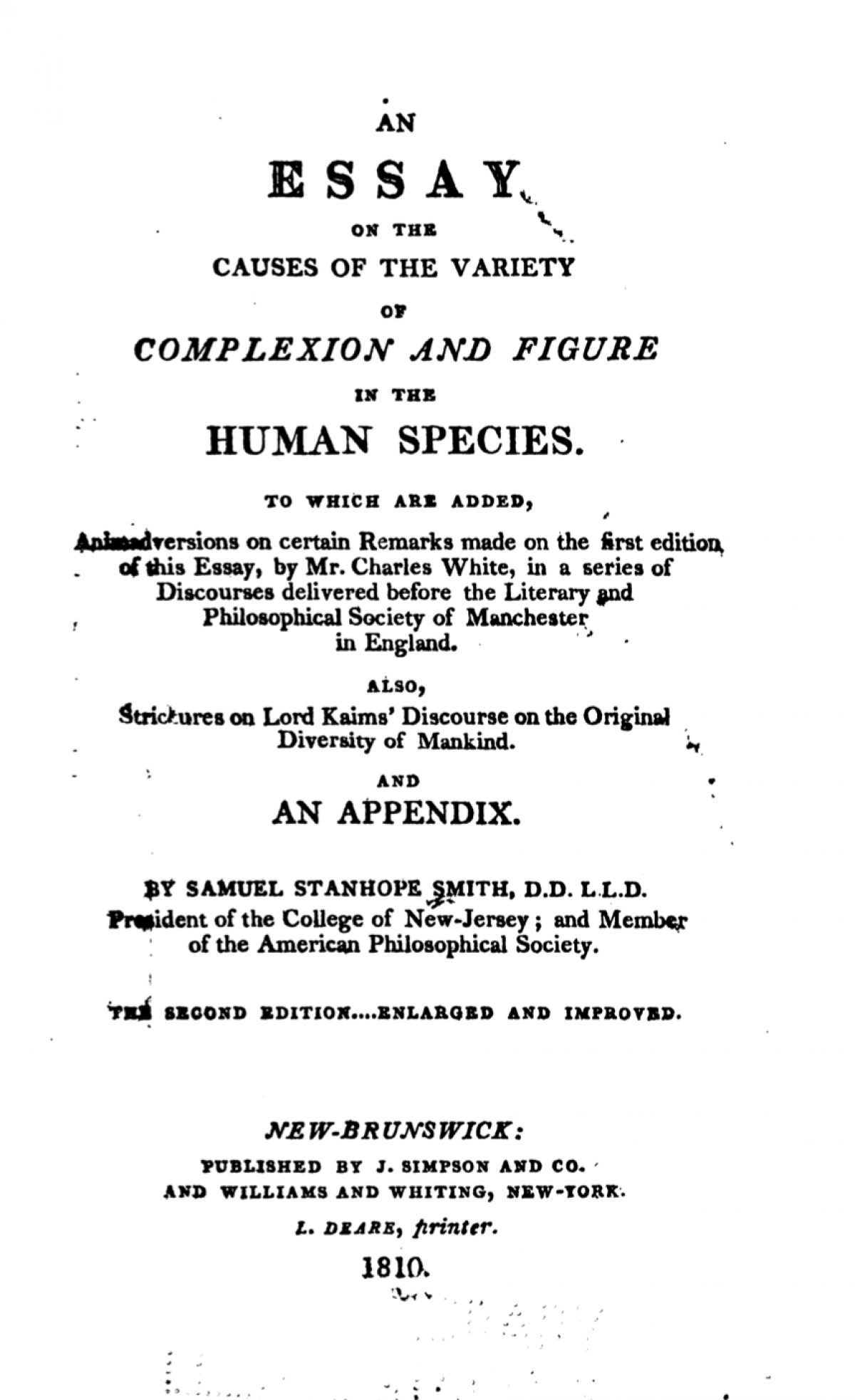
Samuel Stanhope Smith's "Essay on the Cause of the Variety of Complexion and Figure in the Human Species," first delivered in 1787.
View Primary Sources
Ashbel Green (1812-1822)
After the too-secular Smith was forced to resign the presidency, the college trustees chose Ashbel Green, a devout Presbyterian minister and noted scholar, to replace him. Green, chaplain of Congress from 1792 to 1800, was also a former student of John Witherspoon and an opponent of Thomas Jefferson—though for considerably different reasons than Smith. (Green denounced Jefferson for supporting Deist newspapers that spread “infidel principles.”)[38] In 1809, he proposed the establishment of the Princeton Theological Seminary and was named to its board of trustees in 1812, the same year he became president of the College of New Jersey. Green’s life and career was characterized by deep religious convictions, but these convictions did not keep him from owning or hiring slaves—including at least three who lived and worked in his household while he served as president.
While living in the President’s House, Green “purchased the time of a black boy and black girl” named John and Phoebe, making an informal agreement with the two to free them when they reached the age of twenty-five.[39] Green also owned an enslaved woman named Betsey Stockton, who had been given as a gift to his first wife. In 1813, Green sold three years of Betsey’s time to his nephew, but she returned to Princeton after the death of Green’s third wife in 1817, at which point Green emancipated her.[40] In 1822, Betsey Stockton—herself a devout Christian—would embark on a trip to the Sandwich Islands (present-day Hawaii), becoming the first single female American missionary abroad.[41]
Despite being a slaveholder himself, Green condemned slavery as a moral abomination. In 1818, Green drafted a (unanimously accepted) resolution on slavery for the American Presbyterian Church’s General Assembly, calling the practice “a gross violation of the most precious and sacred rights of human nature” and “utterly inconsistent with the law of God.”[42] Green’s report fell short, however, of advocating emancipation. He wrote that, without proper preparation for freedom, free African Americans would only “destroy themselves or others.”[43] Ultimately, Green’s powerful condemnation of slavery was undercut by his racist assumptions of enslaved people’s ignorance and an only moderately anti-slavery proposal for action: the religious education of slaves and support for the American Colonization Society.
James Carnahan (1823-54)
James Carnahan was Princeton’s longest-serving president as well as its last to own slaves. Carnahan graduated from the College of New Jersey in 1800, after which he served as a tutor at Princeton, studied theology under Samuel Stanhope Smith, and was ordained as a Presbyterian minister.[44] Carnahan established a seminary in Georgetown, Washington D.C., where he lived for eleven years; during this time the 1820 Federal census recorded two slaves, a boy and a girl both under the age of fourteen, in his household.[45] When he moved to Princeton in 1823, Carnahan may have brought one or both of his slaves to the President’s House with his wife and children. Ten years later, the census counted one “free colored person” in his household, a male servant between the ages of ten and twenty-four—perhaps the same boy from the 1820 census, freed either by Carnahan or according to New Jersey’s restrictive gradual emancipation law.[46] Carnahan continued to employ free Black servants in his home while president, including three “free colored persons” in 1840 and a “mulatto” woman in 1850.[47]
Carnahan was likely influenced by his mentor Smith’s promotion of colonization as a solution to slavery and racism in the United States. Carnahan simultaneously served as Princeton’s president and the director of the New Jersey branch of the American Colonization Society—donating time and money to the ACS as well as lending his name and influence as Princeton’s president to the organization.[48]
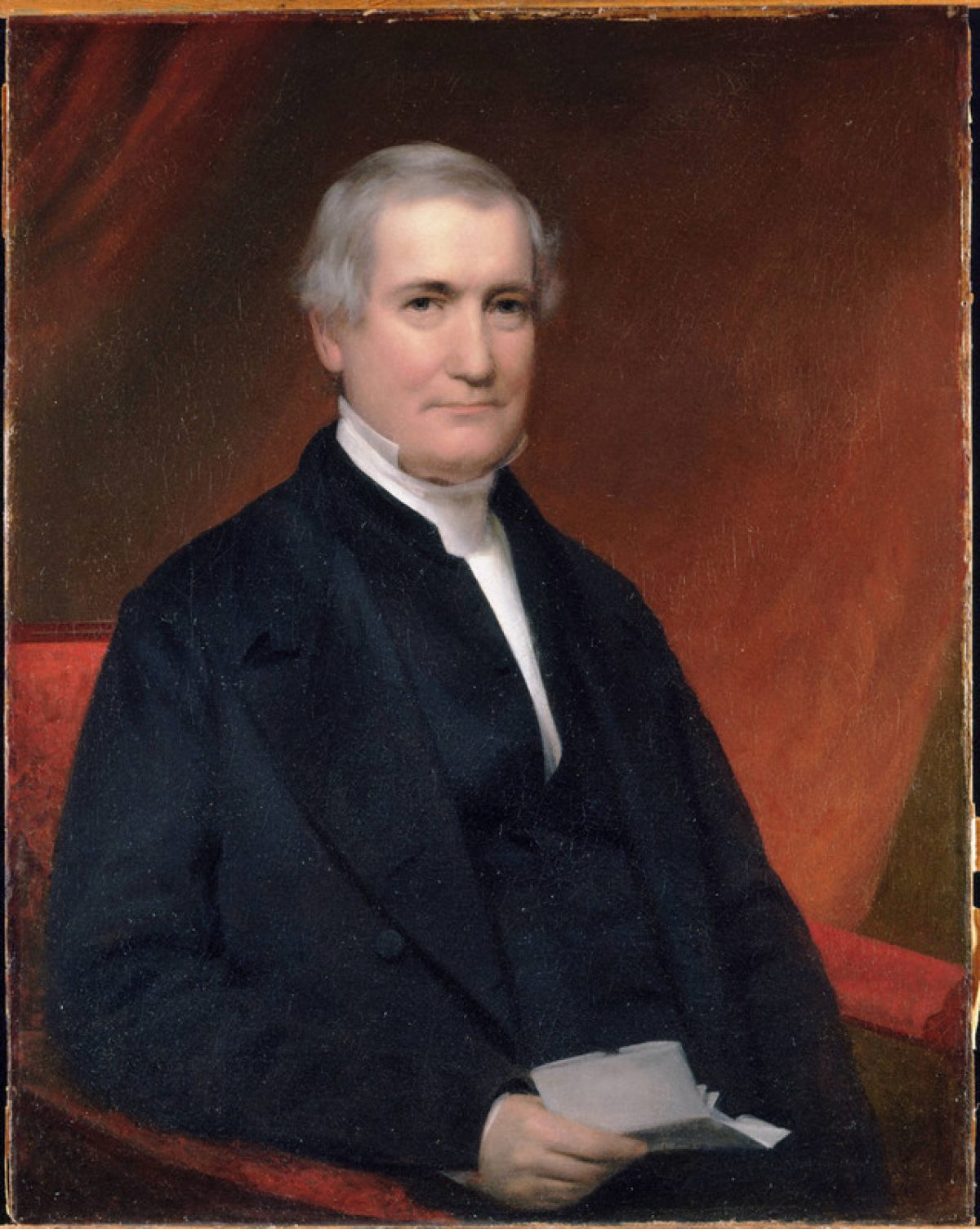
Portrait of James Carnahan, Princeton's ninth president and the last to own slaves while in office.
View Primary Sources
About the Author
R. Isabela Morales is an award-winning author and public historian. Her first book, Happy Dreams of Liberty: An American Family in Slavery and Freedom, received the 2023 Frederick Douglass Book Prize, the 2023 Tom Watson Brown Book Award, the 2023 Shapiro Book Prize, the 2023 William Nelson Cromwell Book Prize, the 2024 James F. Sulzby Book Award, and was a finalist for the prestigious Harriet Tubman Prize. Dr. Morales received her Ph.D. in history from Princeton University in 2019. She has been involved in the Princeton & Slavery Project since its founding as a researcher, contributing writer, editor, and project manager.
View all stories by R. Isabela Morales »
References
[1]
Thomas Jefferson Wertenbaker, Princeton, 1746-1896 (Princeton, NJ: Princeton University Press, [1946] 1996), 19.
⤴
[2]
Craig Hollander and Martha A. Sandweiss, “Princeton and Slavery: Holding the Center,” Princeton & Slavery Project, accessed 27 September 2017, slavery.princeton.edu/stories/princeton-and-slavery-holding-the-center.
⤴
[3]
Wertenbaker, “The Cornerstone is Laid,” in Princeton, 1746-1896, 3-47;Michael R. Glass, “Princeton’s Founding Trustees,” accessed 12 July 2017, Princeton & Slavery Project, accessed 27 September 2017, slavery.princeton.edu/stories/; [No Headline], Philadelphia Gazette, August 13, 1747, 3.
⤴
[4]
Cailin Hong, “Jonathan Dickinson,” Princeton & Slavery Project, accessed 27 September 2017, slavery.princeton.edu/stories/jonathan-dickinson.
⤴
[6]
Jonathan Dickinson, Familiar Letters to a Gentleman, Upon a Variety of Seasonable and Important Subjects in Religion (Edinburgh: William Gray, 1757), 442-443.
⤴
[8]
Aaron Burr Sr., “The watchman’s answer to the question, What of the night, &c. A sermon preached before the Synod of New-York, convened at Newark, in New-Jersey, September 30. 1756.,” Evans Early American Imprint Collection, University of Michigan, accessed 12 July 2017, http://quod.lib.umich.edu/e/ev....
⤴
[9]
Bill of Sale for Caesar reproduced in Milton Meltzer, Slavery: A World History (Boston: Da Capo, 1993); R. Isabela Morales, “Slavery at the President’s House,” Princeton & Slavery Project, accessed 27 September 2017, slavery.princeton.edu/stories/presidents-house.
⤴
[10]
Kenneth P. Minkema, “Jonathan Edwards’s Defense of Slavery,” Massachusetts Historical Society, Vol. 4, Race and Slavery (2002).
⤴
[11]
Richard Anderson, “Jonathan Edwards,” Princeton & Slavery Project, accessed 27 September 2017, slavery.princeton.edu/stories/jonathan-edwards.
⤴
[14]
Minkema, “Jonathan Edwards’s Defense of Slavery,” 43; R. Isabela Morales, “Slavery at the President’s House,” Princeton & Slavery Project, accessed 27 September 2017, slavery.princeton.edu/stories/presidents-house.
⤴
[15]
George William Pilcher, Samuel Davies: Apostle of Dissent in Colonial Virginia (Knoxville, TN: University of Tennessee Press, 1971).
⤴
[16]
R. Isabela Morales, “Samuel Davies,” Princeton & Slavery Project, accessed 27 September 2017, slavery.princeton.edu/stories/samuel-davies.
⤴
[17]
Memoir of the Rev. Samuel Davies, Formerly President of the College of New Jersey (Boston: Massachusetts Sabbath School Union, 1832), 77.
⤴
[18]
Samuel Davies, The Duty of Masters to their Servants: In a Sermon, by the Late Reverend, Pious, and Learned, Samuel Davies, of Hanover County, Virginia (Lynchburg, VA: William W. Gray, 1809).
⤴
[20]
Jeffrey H. Richards, “Samuel Davies and the Transatlantic Campaign for Slave Literacy in Virginia,” The Virginia Magazine of History and Biography, Vol. 111, No. 4 (2003), 333-378.
⤴
[21]
Samuel Davies, Sermons on Important Subjects, by the Late Reverend and Pious Samuel Davies, A.M. Some Time President of the College in New Jersey (Boston: Lincoln & Edmands, 1810), 126.
⤴
[22]
Samuel Davies, The Duty of Masters to their Servants.
⤴
[24]
Leigh E. Smith, “Finley, Samuel,” American National Biography Online, accessed 1 July 2017, www.anb.org.
⤴
[26]
Samuel Finley, The Curse of Meroz; Or, The Danger of Neutrality, in the Cause of God, and our Country (Philadelphia: James Chattin, 1757), 5.
⤴
[29]
“To Be Sold,” Pennsylvania Journal, 31 July 1766.
⤴
[30]
Lesa Redmond, “John Witherspoon,” Princeton & Slavery Project, accessed 27 September 2017, slavery.princeton.edu/stories/john-witherspoon.
⤴
[34]
Nicholas Guyatt, “Samuel Stanhope Smith,” Princeton & Slavery Project, accessed 27 September 2017, slavery.princeton.edu/stories/samuel-stanhope-smith; “Samuel Stanhope Smith,” The Presidents of Princeton University, Princeton University, accessed 12 July 2017, https://www.princeton.edu/pub/presidents/smith/.
⤴
[35]
Nicholas Guyatt, “Samuel Stanhope Smith,” Princeton & Slavery Project, accessed 27 September 2017, slavery.princeton.edu/stories/samuel-stanhope-smith.
⤴
[38]
R. Isabela Morales, “Ashbel Green,” Princeton & Slavery Project, accessed 27 September 2017, slavery.princeton.edu/stories/ashbel-green.
⤴
[41]
Gregory Nobles, “Betsey Stockton,” Princeton & Slavery Project, accessed 27 September 2017, slavery.princeton.edu/stories/betsey-stockton.
⤴
[42]
Minutes of the General Assembly of the Presbyterian Church in the United States of America From Its Organization A.D. 1789 to A.D. 1820 Inclusive (Philadelphia: Presbyterian Board of Publication, 1847), 692-694.
⤴
[44]
“James Carnahan,” The Presidents of Princeton University, Princeton University, accessed 12 July 2017, https://www.princeton.edu/pub/presidents/carnahan/.
⤴
[45]
Jessica R. Mack, “James Carnahan,” Princeton & Slavery Project, accessed 27 September 2017, slavery.princeton.edu/stories/james-carnahan.
⤴




